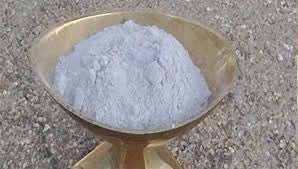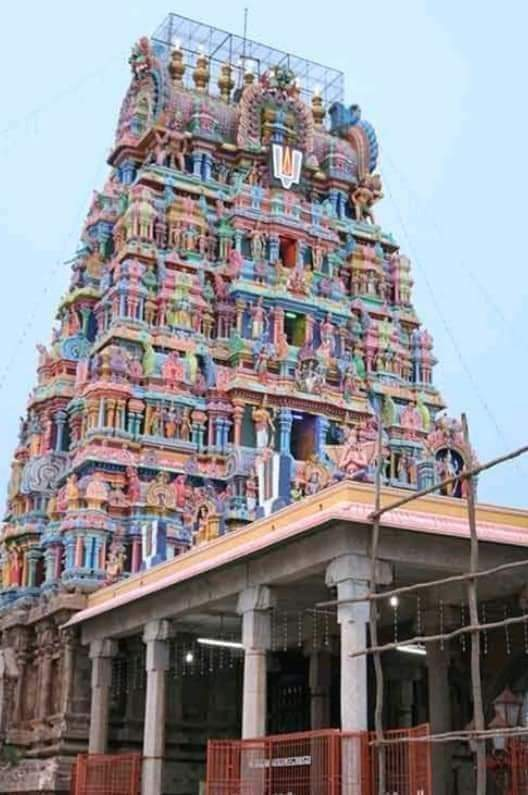Important facts on #Saivism
1. The symbols of Saivism are Vibhuti, Rudraksha and the Namasivaya Mantra
2. Annabhishekam is done during
Aipasi Poornima to Lord Shiva
3. The form in which Shiva is a yogi and bestows wisdom Is #Dakshinamurthy
4. Where is Shiva who represents




1. The symbols of Saivism are Vibhuti, Rudraksha and the Namasivaya Mantra
2. Annabhishekam is done during
Aipasi Poornima to Lord Shiva
3. The form in which Shiva is a yogi and bestows wisdom Is #Dakshinamurthy
4. Where is Shiva who represents




the soul?
Thiruperundurai (Avudayarkoil)
5. The place where Easan graces as the Kalasamhara Murthi is
#Thirukkadaiyur
6. The place where Lord Shiva asked Nandi to move to see Gnanasambandar is #Pattiswaram
7. The one who sang a song on Lord Siva once every year is #Thirumoolar
Thiruperundurai (Avudayarkoil)
5. The place where Easan graces as the Kalasamhara Murthi is
#Thirukkadaiyur
6. The place where Lord Shiva asked Nandi to move to see Gnanasambandar is #Pattiswaram
7. The one who sang a song on Lord Siva once every year is #Thirumoolar
8. The shrine known as Muktivasal is Thiruvengadu (Navagraha Budhan Sthalam, Nagapattinam District)
9. Snanam of Shiva Parvati in Cauvery in the month of Aippasi is known as #Tulasanam
10. Bathing in Cauvery along with all the Gods on the last day of the month of Ippasi in
9. Snanam of Shiva Parvati in Cauvery in the month of Aippasi is known as #Tulasanam
10. Bathing in Cauvery along with all the Gods on the last day of the month of Ippasi in
Mayiladuthurai is called Kadai Muka Snanam.
11. The king who built a roof temple (mada Kovil) for Shiva is #Kochengatchozhan.
12. The Lord who is worshiped as Koothappan is Nataraja (Khootu means dance)
13. A place blessed with the virtue of if you get Dharshan here one is
11. The king who built a roof temple (mada Kovil) for Shiva is #Kochengatchozhan.
12. The Lord who is worshiped as Koothappan is Nataraja (Khootu means dance)
13. A place blessed with the virtue of if you get Dharshan here one is
sure of mukti is #Chidambaram
14. A once-in-a-lifetime must visit Kshethram or holy place is #Kasi
15. The place where Lord Shiva appeared and stood as fire is
#Thiruvannamalai
16. The place where Ambal worshiped Lord Shiva in the form of a peacock is Mylapore Kapaleeswarar
14. A once-in-a-lifetime must visit Kshethram or holy place is #Kasi
15. The place where Lord Shiva appeared and stood as fire is
#Thiruvannamalai
16. The place where Ambal worshiped Lord Shiva in the form of a peacock is Mylapore Kapaleeswarar
Temple
17. Devaram listing the monthly festivals is Mylapore Devaram (Sung by Sambandar)
18. Name of the symbol showing Dakshinamurthy folded fingers is #ChinMuthirai
19. The one who took birth on earth because he fell in love with Apsaras in Deva Loka is #Sundarar.
17. Devaram listing the monthly festivals is Mylapore Devaram (Sung by Sambandar)
18. Name of the symbol showing Dakshinamurthy folded fingers is #ChinMuthirai
19. The one who took birth on earth because he fell in love with Apsaras in Deva Loka is #Sundarar.
20. The place where Easan married Parvati who were both belonging to hunter clan is #Srisailam (Andhra Pradesh)
21. Among the Shakti Peedams, Bhairavi Peedam is #Puri_Jagannath_Temple in Orissa
22. The place where Lord gave his left side to Goddess is #Thiruvannamalai
21. Among the Shakti Peedams, Bhairavi Peedam is #Puri_Jagannath_Temple in Orissa
22. The place where Lord gave his left side to Goddess is #Thiruvannamalai
23. The lamp lit in the morning on the Karthika Deepam in Tiruvannamalai is #Barani_Deepam (Anaya Deepam, the lamp that does not die)
24. Arunachalam, Arunam+ Achalam translates to fire + mountain.
25.Arunagirinathar attained Mukthi in the form of a parrot in #Thiruvannamalai



24. Arunachalam, Arunam+ Achalam translates to fire + mountain.
25.Arunagirinathar attained Mukthi in the form of a parrot in #Thiruvannamalai



26. The name of the Lord who comes out in charriots in Thiruvannamalai is #Bhakthanugraha_Somaskandhar
27. #Karthigai_Lamp postal stamp was first issued on Dec 12 1997
28. The star #Karthigai is for the Gods, Lord Shiva, Subramanya nd the Sun God
29. The minimum time an oil
27. #Karthigai_Lamp postal stamp was first issued on Dec 12 1997
28. The star #Karthigai is for the Gods, Lord Shiva, Subramanya nd the Sun God
29. The minimum time an oil
lamp lit before God should burn for #24Minutes (one nazhigai)
30. The one who is worshipped as Amsam of Lord Shiva is Rama Bhakta #Hanumangarh
31. What is the Shiva Purana which starts with Namasivaya? #Thiruvachakam
32. How is Nandi called when He carries the Lord and His
30. The one who is worshipped as Amsam of Lord Shiva is Rama Bhakta #Hanumangarh
31. What is the Shiva Purana which starts with Namasivaya? #Thiruvachakam
32. How is Nandi called when He carries the Lord and His
consort? #Aravidai (meaning dharma bull)
33. What are 4 important things to achieve with this birth? #Dharma_Artha_kama_Moksha
34. How many types of dances did Lord Shiva do? #108Types
35. Which female devotee had the fortune of witnessing Lord Shiva dance? #Karaikal_Ammaiyar
33. What are 4 important things to achieve with this birth? #Dharma_Artha_kama_Moksha
34. How many types of dances did Lord Shiva do? #108Types
35. Which female devotee had the fortune of witnessing Lord Shiva dance? #Karaikal_Ammaiyar
36. Who said it is indeed a miracle to be born a human being? #Appar Thirunavukarasar
37. What is the meaning behind #Muyalagan under the feet of Lord Shiva? If one surrenders #ego one gets #happiness
38. Of the five Sabhas which place is Chithra Sabha? #Kutralam
37. What is the meaning behind #Muyalagan under the feet of Lord Shiva? If one surrenders #ego one gets #happiness
38. Of the five Sabhas which place is Chithra Sabha? #Kutralam

39. The name of the dance that Lord Shiva performs at midnight is #SankaraThandavam
40. Lord Nataraja pressing #Muyalagn under His left foot is seen in #Velliyambalam Madhurai.
41. The name of the dance Lord Shiva performs in the evening joyfully is called #PradhoshaDance
40. Lord Nataraja pressing #Muyalagn under His left foot is seen in #Velliyambalam Madhurai.
41. The name of the dance Lord Shiva performs in the evening joyfully is called #PradhoshaDance

Pujangalitham.
42. The days that are most suited for Virat to Lord Shiva are the stars #Arudhra_Krithika_Somavar
43. The special Prasadh that is offered to Lord Shiva on Arudhra is called #KaLi which is made with rice, moong dhal, jaggery and coconut, a delicious preparation.
42. The days that are most suited for Virat to Lord Shiva are the stars #Arudhra_Krithika_Somavar
43. The special Prasadh that is offered to Lord Shiva on Arudhra is called #KaLi which is made with rice, moong dhal, jaggery and coconut, a delicious preparation.
44. The name of Lord Shiva residing in Thirichirapalli is #Thayumanavar
45. Of the panja Bhoota sthalas teh Vayu (wind) Sthala is #Kalhasthi
46. The Rishi who prayed to Lord Shiva in the form of a bee is #Bringhi
47. Thirumoolar wrote Thirumandhiram. It is called
45. Of the panja Bhoota sthalas teh Vayu (wind) Sthala is #Kalhasthi
46. The Rishi who prayed to Lord Shiva in the form of a bee is #Bringhi
47. Thirumoolar wrote Thirumandhiram. It is called
#Tenth_Thirumurai
48.The place where Thirugnyana Sambandhar a Nayanmar, got his golden cymbals is #Thirukolakka Thalamudaiyar Temple near Sirkazhi
49. The literal translation of Vibhuti is #SuperiorWealth
50. The Shiva temple which rectifies the maleffects of the planet
48.The place where Thirugnyana Sambandhar a Nayanmar, got his golden cymbals is #Thirukolakka Thalamudaiyar Temple near Sirkazhi
49. The literal translation of Vibhuti is #SuperiorWealth
50. The Shiva temple which rectifies the maleffects of the planet
Venus in our horoscope is in #Kanjanur
51. How many Jyothirlingams are there?#12JyothirLingams
52. The name of the Sidhar in Madurai is #Sundarandhar
53. The place where the wedding of Thirugnyana Sambandhar took place is #Aachaalpuram Thiruperumanallur
54. The name of
51. How many Jyothirlingams are there?#12JyothirLingams
52. The name of the Sidhar in Madurai is #Sundarandhar
53. The place where the wedding of Thirugnyana Sambandhar took place is #Aachaalpuram Thiruperumanallur
54. The name of
Thirunavukarasar's sister is #Thilakavathi.
55. The Nayanar who went to Kailash with Sundarar is #Cheraman_Perumal_nayanar
56. The pious devotee who prayed, My Lord please listen to my wishes and grant them was #Vallalar
57. The pious lady devotee who established Saivism in
55. The Nayanar who went to Kailash with Sundarar is #Cheraman_Perumal_nayanar
56. The pious devotee who prayed, My Lord please listen to my wishes and grant them was #Vallalar
57. The pious lady devotee who established Saivism in
Madurai is #Mangayarkarasi
58. In whose Kingdom was Manikavachakar a minister? #ArimarthanaPandiyan
59. The Pallava King who embraced Saivism because of Thirunavukarasar is #MahendraPallavan
60. Of the 5 faces of Shiva which is the protector? #EastFacingFace #Thathpurush
58. In whose Kingdom was Manikavachakar a minister? #ArimarthanaPandiyan
59. The Pallava King who embraced Saivism because of Thirunavukarasar is #MahendraPallavan
60. Of the 5 faces of Shiva which is the protector? #EastFacingFace #Thathpurush

@threadreaderapp unroll
• • •
Missing some Tweet in this thread? You can try to
force a refresh




















